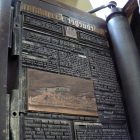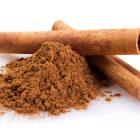In the Spotlight
PYROTECHNICS: The art of fire
June, 2016
Every Canada Day, cities all over the country are treated to wondrous pyrotechnic displays. It seems like it would be a great job to have, but being the one to light the fuse that brings joy to thousands involves a lot more than one might think. If you’ve ever wondered what it would take to put on a show yourself, we’ve got the info to get you started.
More Than Just Fireworks
When most people think of pyrotechnics, they think of simple fireworks. And while that’s not wrong, you’d be way more accurate to compare pyrotechnics to a beautiful painting and to think of fireworks as one of the many pigments on the artist’s palette. It might seem strange to talk about fire and explosions as art, but that’s exactly what the word pyrotechnic means: the art of fire.
Pyrotechnic operators work with all kinds of tools and in all kinds of environments. Every time you see a fireball go off at a rock concert or an action hero running from an explosion on TV, you’re witnessing a pyrotechnic performance. You’ve probably even put on a few basic pyrotechnic shows yourself—every time you’ve lit sparklers on a birthday cake.
Pyrotechnics &
Canadian Law
While pyrotechnics can be a source of great beauty, they can also be extremely dangerous. As explosive devices, pyrotechnics are regulated by Natural Resources Canada (NRC) and are categorized by safety level.
Display fireworks and pyrotechnic effect fireworks are both considered by NRC to be extremely hazardous and require a special certification to buy and operate legally. These are the pyrotechnic devices that you’re used to seeing at celebrations and on the big screen. They include anything from the standard aerial fireworks to the experimental pyrotechnic wonders that haven’t quite found a name yet.
Consumer fireworks are pyrotechnic devices that are considered relatively safe and can be acquired and operated by almost anyone. These include recreational devices such as sparklers, Roman candles and some non-projectile fireworks. While these types aren’t regulated federally, in Alberta, many municipal and county bylaws require that these pyrotechnics be purchased and operated by adults with valid permits. Additionally, many seemingly tame pyrotechnic devices (such as cherry bombs and firecrackers) are banned entirely in Canada. Always be sure to check the local regulations AND the current fire-hazard level before putting on a show of your own.
Getting Certified
If you’re interested in becoming a pyrotechnic operator yourself or are just interested in taking your amateur shows to the next level, NRC also regulates the official pyrotechnics certification process. There are two different certifications: one covers fireworks, and the other covers the wider world of pyrotechnic effects. The two categories don’t overlap, so be sure you know exactly which kinds of devices you’re interested in before you apply. In order to receive your licence, you’ll have to be over the age of 18 and complete a brief safety and training course. This course is usually a few days at most and teaches you everything you need to know about operating pyrotechnics safely. Once certified, you’ll be on your way to perfecting your craft and giving people a show they’ll never forget. t8n
Fun Fact
Most people know that fireworks were invented in ancient China. But modern pyrotechnic displays didn’t come about until the 1800s when Italian scientists started to experiment with different colours and intensities of light.
Did You Know?
While Sturgeon County and the City of Edmonton allow the use of consumer fireworks with a permit from a local fire department, the rules are stricter within St. Albert city limits. All pyrotechnic devices, regardless of classification, require an official federal certification to use, in addition to the standard municipal permits.













